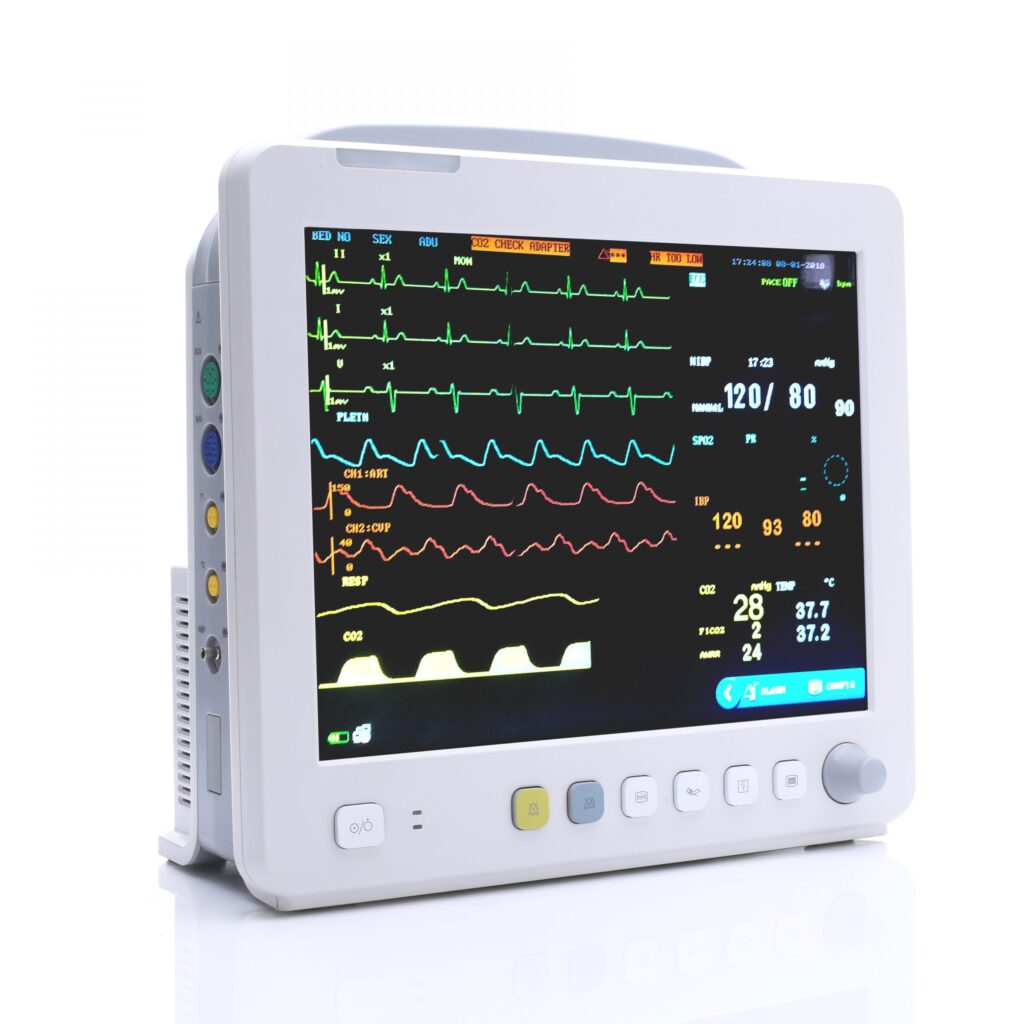Comprehensive CCU monitoring tools
Home » Comprehensive CCU monitoring tools
Comprehensive CCU monitoring tools
Monitoring tools in a Coronary Care Unit (CCU) are crucial for continuous assessment of critically ill patients with cardiac conditions. These comprehensive CCU monitoring tools help healthcare providers closely track vital signs, cardiac function, and other relevant parameters. Here are key components of comprehensive CCU monitoring tools:
Telemetry Systems:
Telemetry systems continuously monitor and transmit electrocardiographic (ECG) data, allowing real-time surveillance of cardiac rhythm. This is essential for early detection of arrhythmias and changes in the patient’s cardiac status.
Invasive Hemodynamic Monitoring:
Invasive hemodynamic monitoring involves placing catheters to directly measure parameters such as central venous pressure (CVP), pulmonary artery pressure (PAP), and cardiac output. This provides critical information about cardiac function and helps guide interventions.

Continuous ST-Segment Monitoring:
Continuous ST-segment monitoring is important for detecting ischemic changes on the ECG. It helps identify myocardial infarctions or ischemia, allowing for prompt intervention.
Pulse Oximetry:
Continuous pulse oximetry monitors oxygen saturation levels in the blood, providing insights into respiratory function and ensuring adequate oxygenation.
Intra-Arterial Blood Pressure Monitoring:
Intra-arterial blood pressure monitoring involves placing catheters in arteries to directly measure blood pressure. This provides accurate and continuous data, particularly important for patients with hemodynamic instability.
Continuous Cardiac Output Monitoring:
Continuous cardiac output monitoring tools measure cardiac output and stroke volume continuously. These tools are valuable for optimizing fluid management and assessing cardiac performance.
Cardiac Biomarker Monitoring:
Regular monitoring of cardiac biomarkers such as troponin and creatine kinase-MB (CK-MB) helps in diagnosing and assessing the extent of myocardial damage.
Continuous Temperature Monitoring:
Continuous temperature monitoring tracks core body temperature, crucial for patients at risk of hyperthermia or hypothermia. It supports early detection of sepsis or other infectious complications.
Transesophageal Echocardiography (TEE):
TEE provides real-time imaging of the heart and surrounding structures. It is valuable for assessing cardiac function, detecting valvular abnormalities, and guiding interventions.
Non-Invasive Blood Pressure Monitoring:
Non-invasive blood pressure monitoring through automated cuffs provides frequent measurements without invasive procedures. This is particularly important for frequent blood pressure monitoring in critically ill patients.
Capnography:
Capnography monitors end-tidal carbon dioxide levels, providing information on ventilation and potential respiratory compromise. It is especially important for patients on mechanical ventilation.
Continuous Glucose Monitoring:
Continuous glucose monitoring tools track glucose levels in critically ill patients, supporting glycemic control and preventing complications associated with hyperglycemia.
Electrolyte Monitoring:
Regular monitoring of electrolytes, including potassium, sodium, and magnesium, is essential for patients with cardiac conditions to prevent arrhythmias and other complications.
Remote Monitoring and Telemedicine:
Remote monitoring and telemedicine platforms enable healthcare providers to monitor CCU patients from a distance, allowing for early detection of changes and efficient use of resources.
Data Analytics and Decision Support:
Data analytics tools analyze large volumes of patient data to identify trends, predict potential issues, and provide decision support. This assists in early identification of deteriorating patients and supports evidence-based care.
Alarm Systems with Smart Notifications:
Advanced alarm systems with smart notifications help reduce alarm fatigue by prioritizing critical alarms and providing timely alerts to healthcare providers for prompt intervention.
Integration of these comprehensive CCU monitoring tools contributes to a dynamic and thorough approach to patient care, enabling healthcare providers to detect and respond to changes in real-time, optimize treatment strategies, and improve patient outcomes. Regular updates and optimization of these tools are essential to ensure they align with the latest standards and technologies.
Ready to Begin?
Start with our FREE Consultation!
Or call +880 1766-709223 or write us at info@qcconcern.org with any other questions.
